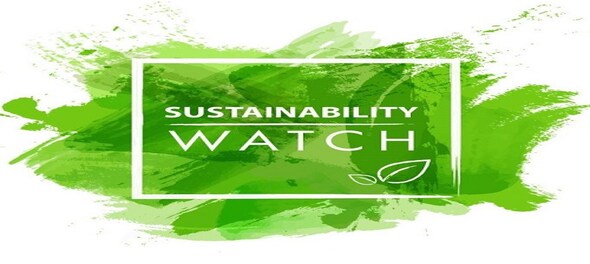
India submitted its Long-Term Low Emission Development Strategy (LT-LEDS), for transition to net zero emissions by or around mid-century to the United Nations' Framework Convention on Climate Change (UNFCCC) during the just concluded COP27. With this, India joined other large emitters like China, US, Russia and Japan, who had already submitted their strategies. As expected, the strategy is well aligned to and builds on the existing Nationally Determined Contributions (NDCs) under the Paris Agreement.
The strategy document of India lists seven low emission strategic transition areas that are complemented by research and innovation, adaptation and resilience, Missions LiFE-Lifestyle for Environment, and international cooperation. The seven transition areas include four pillars of the economy such as power, transportation, urbanisation (built environment), and industry; two carbon removal pathways ie. carbon removal by engineered solutions and improving vegetation cover; and finally, the financing aspect of low carbon development. Agriculture is noticeably left out of the list as the government does not want to put additional emission reduction burden on this vulnerable sector.
The document outlines four key considerations that form the bedrock of India’s LT-LEDS: Firstly, India has contributed little to global warming; second, India has significant energy needs for its development; third, India will pursue low carbon development based on its national circumstances (India is already committed to Net Zero); and fourth, India is a climate vulnerable country and, therefore, building resilience is critical to maintain its development outcomes.
The leading transition sector ie. the power sector will continue to push ahead with its renewable energy (RE) foray. Currently, RE, including hydro, constitutes nearly 42 percent of India’s installed capacity and 22 percent of its electricity basket. The document reaffirms the approach that hinges on India’s energy security and the need to use the right mix of fuels, including coal, to power its development. All low carbon technologies such as hydro and nuclear power, offshore wind and solar power, and other forms of RE such as bio-fuels will be expanded under the strategy. India’s vision to be a global hub for green hydrogen and an exporter of green hydrogen and green ammonia is called out throughout the document.
The strategy for low carbon transport system similarly embraces multiple levers such as increasing fuel efficiency, mandatory scrapping, a phased adoption of cleaner fuels like natural gas, bio-CNG, bio-diesel, ethanol, and green hydrogen, expanding public transport, electrification, and adoption of electric vehicles (EVs). India already has a policy for fuel blending (20% ethanol in petrol and 5% biodiesel in diesel by 2030) and Indian Railways is committed to net zero by 2030. The strategy envisions green aviation with sustainable aviation fuels and becoming a hub for green hydrogen fueling for maritime transport.
With an estimated 600 million people living in urban areas by 2030, the strategy document rightly includes urbanisation as a key transition area. While the strategy presents many government programs and standards for energy efficiency and building standards, there is little on incorporating adaptation and enhancing resilience through urban planning and design, except the implementation of an early warning system for climate events. Low carbon municipal services through resource efficiency in water and waste management is listed as an important lever, but a challenge to implement.
The industry sector will undergo low carbon transition through improvements in energy and material efficiency, fuel switching supported by a natural gas supply network, circularity, green hydrogen and related infrastructure, and sustainable development of medium, small and micro enterprises (MSMEs) through capacity building and incentives. Hard-to-abate sectors like steel and cement will see adoption of best available technology and use of green hydrogen.
Carbon removal through engineered solutions such as Carbon Capture, Utilization, and Storage (CCUS) is included almost as a placeholder, highlighting its place, potential, and need. The nature-based removal or the vegetation cover is a part of India’s NDCs and includes several policy measures to restore and conserve forest cover and green cover outside forests.
India’s LT-LEDS essentially is its strategy to become net zero by 2070. We have already heard our industry leaders predicting India being a 40 trillion economy before 2050. By then, our economy must be well on its way to net zero and significantly decoupled with emissions growth. Estimates show that it could take over $10 trillion to reach net zero by 2070 and 500 billion by 2050 for adaptation. Availability and access to low-cost finance is a theme that runs through the document for a good reason. The document presents various financing options along with fiscal measures such as carbon taxes. It alludes to the need of a climate financing framework and some early measures taken by the RBI and SEBI. Financing through carbon markets finds only a casual mention.
Considering that the LT-LEDS has a mid-century and beyond outlook, it calls out key transition sectors and interventions. India has already made good progress in the low-carbon transition, as reflected in its recent ranking among the top 5 climate performers. The LT-LEDS aims to build on that foundation. By laying out the opportunities and challenges, possibilities and financing needs, the strategy document presents a well-balanced and pragmatic roadmap to India’s net-zero goal and growth ambitions.
— Bose Varghese is Senior Director-ESG, Cyril Amarchand Mangaldas. The views are personal.
(Edited by : CH Unnikrishnan)
First Published: Dec 5, 2022 7:53 AM IST
Check out our in-depth Market Coverage, Business News & get real-time Stock Market Updates on CNBC-TV18. Also, Watch our channels CNBC-TV18, CNBC Awaaz and CNBC Bajar Live on-the-go!


2024 Lok Sabha Election | Which way the wind blows in the second phase
Apr 26, 2024 6:09 PM
Election Commission registers case against BJP's Tejasvi Surya for alleged violation of poll code
Apr 26, 2024 5:08 PM
2024 Lok Sabha Elections | Why Kerala is in focus as the second phase begins to vote
Apr 26, 2024 9:33 AM
Bengaluru Rural Lok Sabha election: Over 60% voter turnout recorded by 5 pm
Apr 26, 2024 9:11 AM

